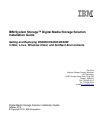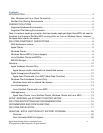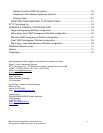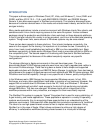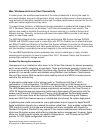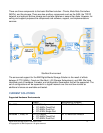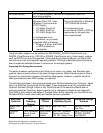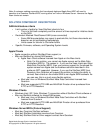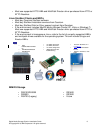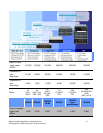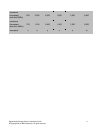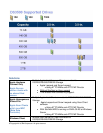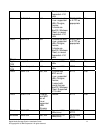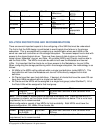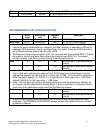Digital Media Storage Solution Installation Guide 5
© Copyright 2010, IBM Corporation. All rights reserved.
Mac, Windows and Linux Client Connectivity
In recent years, the workflow requirements of the video professional is driving the need for
more sophisticated, high-end configurations, which require multiple users to share access to
large amounts of data while maintaining the high-throughput performance required for the rich
media and content applications they serve.
To support these solutions, a SAN-based storage subsystem is needed which supports Mac
OS X, Windows Clients such as Windows 7 and Vista and sometimes Linux servers. The
solution also needs to facilitate the sharing of common volumes in a resilient (failover and
failback) manner. Recently, numerous customers have asked IBM to provide a mid-range
option to meet these needs.
The IBM Digital Media Solution combines high-performance IBM System Storage DS3000,
DS4000 and DS5000 arrays used in conjunction with ATTO’s Celerity line of quad/dual/single
port 8Gb FC HBAs and Quantum’s StorNext File System software to provide the infrastructure
needed for content developers and video professionals to easily access, transfer, archive data,
with the flexibility to scale performance and capacity to the various workflows.
The new IBM Digital Media solution addresses two common challenges in many of video
streaming environments; the need to support Mac OS X, Windows Clients, and the need to
provide high-availability storage access.
StorNext File Sharing Environments
Homogenous Linux installations often occur in the Oil and Gas industry for seismic processing
and in some scientific computing environments. These environments generally include a pair
of Linux servers acting as Meta Data Controllers using Quantum StorNext MDC software and a
number of Linux servers and/or work stations using StorNext client software. Clients access
files via Fibre channel SAN connections while reading and ask the MDCs for exclusive write
control to files while writing.
An alternative configuration is the “storage node” or “Distributed LAN Client” (DLC)
configuration. In this configuration, The MDCs maintain control, but LAN Servers act as
Gateways to access the information and serve it to StorNext DLC clients via LAN connections.
The LAN Gateway servers act as a storage node directly connected to the Fibre Channel or
iSCSI DS Series storage and respond to clients over a high speed LAN connection with file
access over Ethernet or Infiniband over IP using a high throughput StorNext data transfer
protocol. In this case, there will be Quantum StorNext MDC licenses along with Gateway
nodes and LAN Client licenses serving in a distributed (and shared) file system deployment.
In publishing and media environments, many applications require support for Apple MacOS.
Apple installations typically use a shared file system called Xsan. Xsan enables multiple Mac
OSX clients to connect to a single pool of storage and is fully compatible with Quantum’s
StorNext File System. StorNext is very popular in the media market because it allows shared
block-level file system access while offering integrated archive management. However, Apple
offers very limited support outside very specific configurations – with Promise as the RAID
provider. A 100% Apple configuration must be used.



